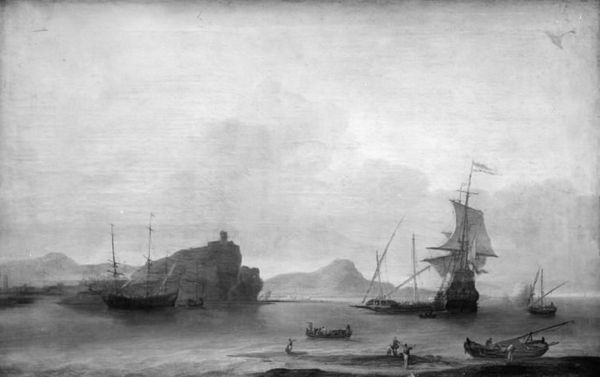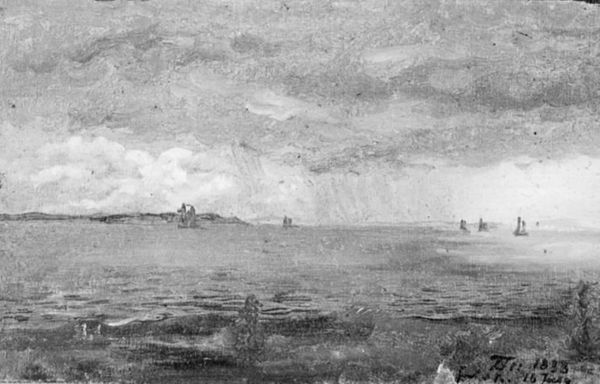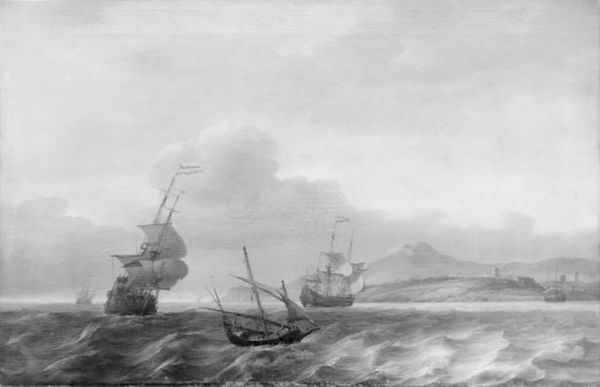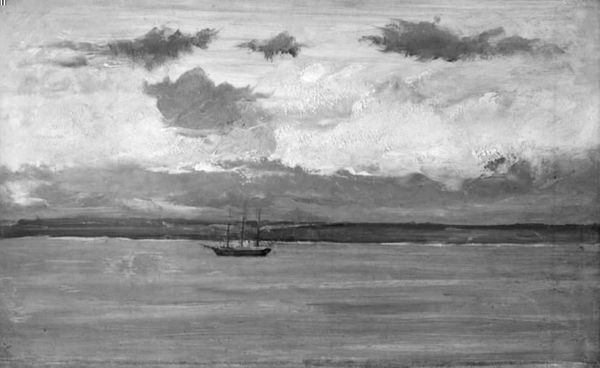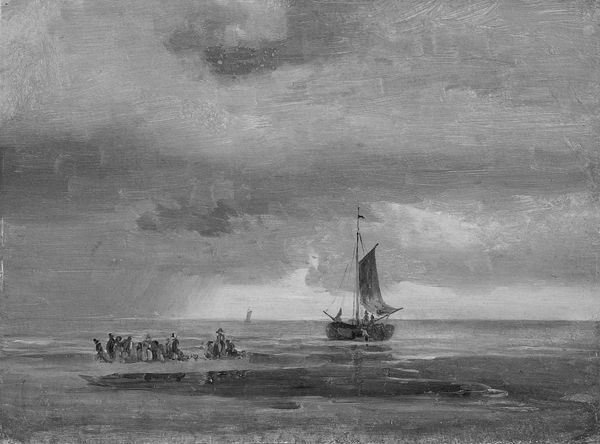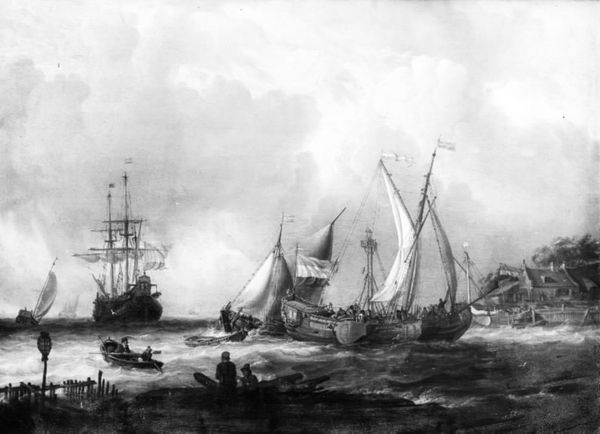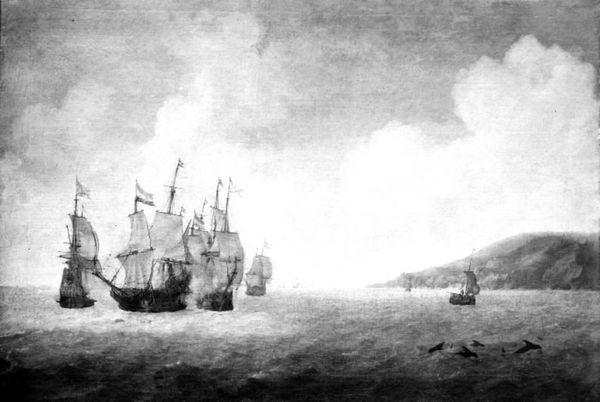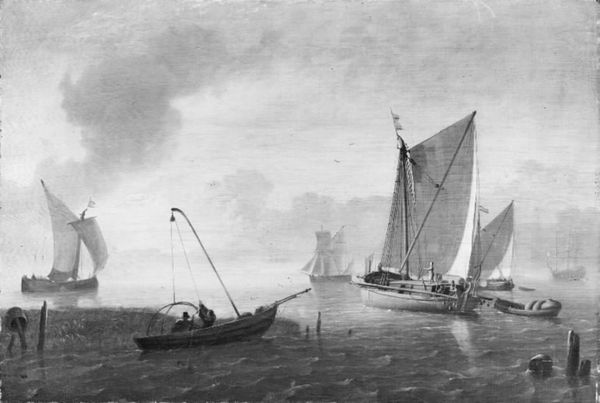
painting, plein-air
#
ship
#
painting
#
plein-air
#
landscape
#
romanticism
#
cityscape
Dimensions: 21 1/2 x 28 7/8 in. (53.8 x 72 cm)
Copyright: Public Domain
Curator: Here we have a cityscape known as “View of the Whampoa Anchorage.” It’s an oil on canvas, painted in 1840, by an anonymous artist. The painting finds its current home at the Metropolitan Museum of Art. Editor: Ah, yes! It’s such a melancholy scene, isn't it? The arrangement of the ships on the water reminds me of musical notation, stilled and serene. Curator: What I find particularly intriguing is considering the circumstances of production, because landscapes from this period were quite dependent on trade with China. Think of all that commerce, materials moving across vast distances and labor required. Editor: True! Thinking about the sailors on those ships—all that cramped existence—and the sheer number of ships suggests it was like a city upon the water. But do you find it dreamlike? There is a subtle stillness despite the amount of human presence. Curator: It's precisely the interplay between "nature" and production that grips me. The artist, although anonymous, uses a very direct approach to portray the economics that are shaping the global stage, specifically with plein-air painting becoming a popular form, bringing artists right into these scenes of commercial hubs. Editor: A great point! And isn't it strange, though? Because for all this industrious activity that we deduce must be taking place, the overall palette is muted, almost monochrome, and the shapes are softened. It lends it a historical, almost distant, air despite being "of the moment" in terms of being plein-air. Curator: Indeed. The monochromatic color choice leads back to thinking about trade, with each color a pigment that represents its own economic impact and value. Also, its romantic elements highlight a moment poised on the brink of change, the cusp between traditional production and industrialized forces on the horizon. Editor: In closing, I leave our listeners with a sense of wonder, wondering about that painter, what life did they live and what exactly they thought while painting this quite affecting document of a time long past. Curator: As we depart, let us ponder the unseen networks of production that connect us, and the means of which landscapes become valuable both economically and historically through these modes.
Comments
No comments
Be the first to comment and join the conversation on the ultimate creative platform.
